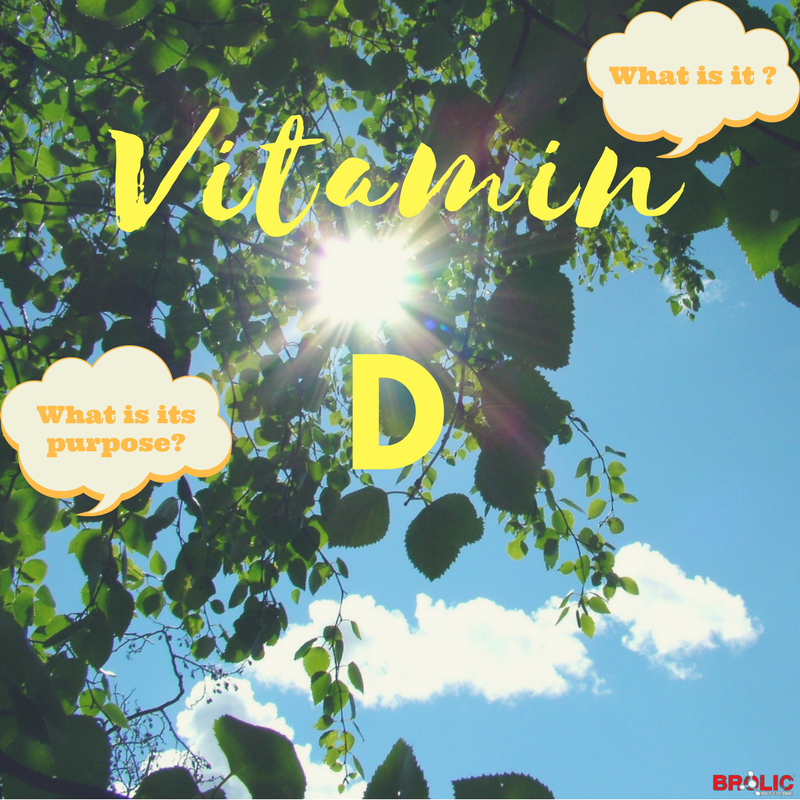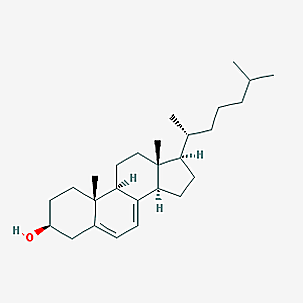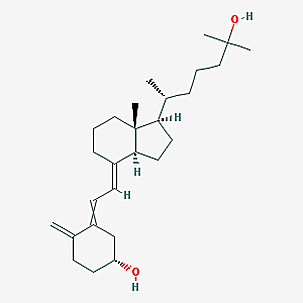Vitamin D: What is it and its Benefits?

What is Vitamin D?
Vitamin D is widely known as an essential fat-soluble vitamin, which is found in food and supplement sources. Moreover, vitamin D is widely categorized into two (2) formats: vitamin D2 and vitamin D3. Vitamin D2 is obtained from the Ultra-violet (UV) irradiation of the yeast sterol Ergosterol, which is naturally found in plants. On the other hand, vitamin D3 is produced by Ultra-violet (B) light from the sun coming into direct contact with the skin, therefore, allowing humans to synthesize vitamin D3 in its most natural form (National Centre for Biotechnology Information, n.d.).
But, is it really a vitamin? According to the Oxford Dictionary, a vitamin is defined as any organic compound which is essential for normal growth and nutrition. Moreover, these organic compounds can only be sourced via our diet as they cannot be synthesized (produced) by the body.
However, as previously stated, our bodies can synthesize vitamin D via sunlight. Therefore, again, the foregoing question is proposed—is it really a vitamin? Technically, it is not.
Surprisingly, Calcitriol (25-hydroxycholecalciferol)—active “vitamin” D—is actually a hormone (a chemical regulatory substance), which is produced and used by the body to stimulate overall health benefits and function of the human anatomy.
Ok, so with the clarification and technicality out of the way, how specifically is the hormone (Calcitriol) synthesized and, what purpose does it actually serve?
Synthesis and Conversion
In order for humans to produce “vitamin” D3, sunlight stimulates a chemical substance within our bodies called 7-Dehydrocholesterol. 7-Dehydrocholesterol is a sterol which serves as the key precursor to vitamin D3 and is otherwise called provitamin D3.
A 2D chemical structure of 7-Dehydrocholesterol is illustrated in Figure 1 below.

Figure 1: 2D Chemical structure of 7-Dehydrocholesterol. Source: National Center for Biotechnology Information.
Once the compound (7-Dehydrocholesterol) is stimulated by the Sun, vitamin D3 is then synthesized within the layers of the skin. Subsequently, the "inactive" form of the sunshine hormone (D3) is then absorbed into the bloodstream. This is where the hormone is then processed by the body’s largest internal organ – the liver.
Thereafter, the liver then produces another vitamin D antecedent known as 25-Hydroxycholecalciferol (or Calcidiol). However, active vitamin D3 has still not yet been realized.
A 2D chemical structure of 25-hydroxycholecalciferol is illustrated in Figure 2 below.

Figure 2: 2D Chemical structure of 25-Hydroxycholecalciferol (Calcidiol). Source: National Center for Biotechnology Information.
Now, at this point, you must be wondering when does it actually become Calcitriol (active vitamin D3)? Well as you may be aware, the body is an advanced and complex organism with its own detailed processes and mechanisms. Therefore, 25-Hydroxycholecalciferol has to be subsequently transported into the bloodstream to the kidneys where it is ultimately converted into Calcitriol (active vitamin D3).
Purpose of Vitamin D3
The role of active vitamin D3 is to serve as the key regulator for Calcium and Phosphorous compounds within the body. Moreover, without active vitamin D3, calcium has an increased chance of hardening within our arteries–Arterial Calcification—which will ultimately result in unwanted health complications. Vitamin D3’s regulation of Calcium and Phosphorous provides the necessary nutrient-availability for the body to develop strong and healthy bones. Furthermore, vitamin D3 helps to promote healthy intestinal function– which is a key facilitator in the absorption of nutrients by the body (Anderson & Klemmer, 2013).
In addition, active vitamin D3 (Calcitriol) travels through the bloodstream in pursuit of cells—the basic building blocks of all living things—which then provide the necessary protein-filled cytoplasms called vitamin D receptors (VDRs). Ultimately, the synergy of both Calcitriol and its respective receptors helps to provide a healthy homeostasis (equilibrium) within the human anatomy that helps to promote its optimal performance.
Now, let’s look at the lack of vitamin D3 intake and a widely accepted assumption.
Vitamin D3 Deficiency
So, are you vitamin D deficient?
Vitamin D deficiency (VDD) has become a global issue – which has now been recognized as a pandemic. Deficiency levels are considered to be present when optimal serum 25-hydroxyvitamin D levels circulating in the blood is < 75 nmol/L, or 30 ng/mL. Furthermore, deficiency is mostly due to the lack of optimal utilization of the Sun’s Ultra-violet Rays—in moderation, while additionally, very few food sources contain the illusive “vitamin” (Anderson & Klemmer, 2013).
Within the European Union, over fifty (50) million inhabitants are vitamin D3 deficient. Moreover, 70% of inhabitants within the United States do not meet the estimated average intake (EAR) level (16 ng/ml– which is based on old data) of vitamin D in order to harness its health benefits (University of Cork, 2016); (Tovey & Cannell, 2016).
In addition, it is widely assumed that dark-skinned people absorb ultra-violet (B) rays from the Sun more efficiently than others. However, this couldn't be more further from the truth. The melanin pigment serves as a protective screen in the epidermal layer of dark skinned people, which hinders the stimulation effects of the Sun’s rays. Therefore, vitamin D3 synthesis by the skin is limited and the potential of inadequacy and/or insufficiency is increased (Nair & Maseeh, 2012). In fact, vitamin D deficiency and insufficiency is prevalent throughout Africa, India, the Middle East and South America – continents and countries known for their abundant sunshine (Nair & Maseeh, 2012).
Lastly, according to Holick and Chen (2008), VDD or insufficiency generally affects breastfed infants, older adults, people with limited sun exposure and people suffering from fat malabsorption.
Consequences of Deficiency
Vitamin D deficiency can create a few unwanted health issues. These issues range from inadequate bone and muscle development in kids – such as the Ricketts disease, Autism among children, inadequate calcium and phosphorus absorption by the body – which ultimately results in low bone mineral density, in addition to Osteoperosis (Nair & Maseeh, 2012);(The Guardian, 2016).
In addition, VDD has also been related to increased risk of cardiovascular disease, cognitive impairment in older adults, severe asthma in children, and cancer.
Limiting the chance of Deficiency or Insufficiency
In order to meet the required sufficient amount of vitamin D3 blood levels (75 nmol/L, or 30 ng/mL), the author recommends to first consult your local physician for a vitamin D blood test.
If deficiency or insufficiency levels are present, then a triangulation approach is best suited to improve your vitamin D levels. As the necessary amount that our bodies require is not provided by our diets, eating foods that are rich in the sunshine hormone will not be sufficient (Vitamin D Council, n.d.).
Therefore, reinforcing the dietary intake (foods rich in vitamin D) with quality supplementation of vitamin D3 (1000 - 4000 IUs/per day for Adults) and exposure to moderate amounts of UV (B) Sun rays (Midday-12pm- is an effective approximate time-frame for UV (B) exposure) one (1) to two (2) times per week will provide an adequate weekly supply of vitamin D3 for your body to optimally utilize.
Lastly, some foods that are rich in vitamin D are: Salmon, Mackerel and other fatty fish, fish oils, beef liver, egg yolks and fortified food sources (Vitamin D Council, n.d.).
Cited Literature:
7-dehydrocholesterol. (n.d.) Medical Dictionary. (2009).
Anderson, J. J. B., & Klemmer, P. J. (2013). Risk of High Dietary Calcium for Arterial Calcification in Older Adults. Nutrients, 5(10), 3964–3974.
Holick M. F., & Chen T. C. (2008). Vitamin D deficiency: A worldwide problem with health consequences.
Nair, R., & Maseeh, A. (2012). Vitamin D: The “sunshine” vitamin. Journal of Pharmacology & Pharmacotherapeutics, 3(2), 118–126.
National Center for Biotechnology Information. PubChem Compound Database; CID=91864756.
The Guardian (2016). Autism linked to vitamin D deficiency during pregnancy, researchers find.
Tovey, A. & Cannell, JJ. (2016). Are we currently amid a vitamin D deficiency pandemic? The Vitamin D Council Blog & Newsletter, 2016.
University of Cork. Cork Centre for Vitamin D and Nutrition Research (2016).
Vitamin D Council, (n.d.). How do I get the vitamin D my body needs?
Congratulations @dantebaker! You have completed some achievement on Steemit and have been rewarded with new badge(s) :
Click on any badge to view your own Board of Honor on SteemitBoard.
For more information about SteemitBoard, click here
If you no longer want to receive notifications, reply to this comment with the word
STOPCongratulations @dantebaker! You received a personal award!
You can view your badges on your Steem Board and compare to others on the Steem Ranking
Do not miss the last post from @steemitboard:
Vote for @Steemitboard as a witness to get one more award and increased upvotes!